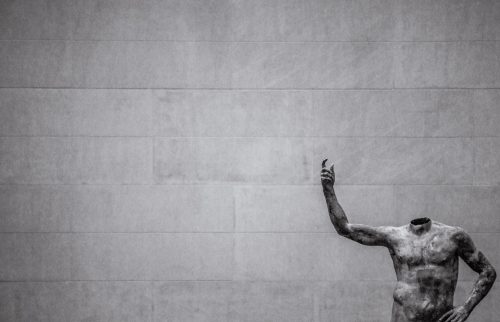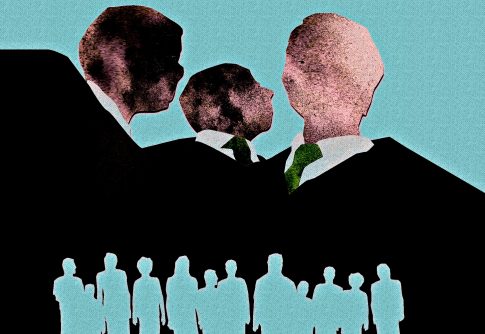Fewer people of modest, average, and above-average means are giving to charity, while a growing percentage of giving comes from the ultra wealthy. This trend, if left unchecked, could fundamentally change the nature of America.
The rich have always played a leading role in charitable giving. Now their role is getting larger. In fact, soon the middle class may not have much of a speaking part – particularly in the wake of the new tax law[1].
The growing domination by the very wealthy in philanthropy was the central topic of the 2016 report “Gilded Giving” from the Institute for Policy Studies. Authors Chuck Collins, Helen Flannery, and Josh Hoxie wrote how over the last decade a growing percentage of charitable giving in the United States had come from the highest earners.
Over those ten years the itemized charitable contributions by the top one percent had increased by 57 percent; itemized contributions from people making $10 million or more – essentially, the top tenth of the top one percent – were up 104 percent.
And what of the middle class, defined for the purposes of the study as families earning less than $100,000? The statistics are less definitive, because a significantly smaller percentage of middle- and lower-income taxpayers have itemized their deductions. But for those who did, charitable donations declined by 34 percent. The report also suggests that over the same period the number of low- and mid-range donations to national charities had declined by 25 percent.
So, if we are to believe this report – and I tend to do so – fewer people of modest, average, and above-average means are giving to charity at all, while those who do contribute are giving less.
A more recent study published by the Chronicle of Philanthropy confirms the same trends: while the total amount of dollars given to charity has continued to increase from year to year, fewer Americans appear to be giving to charity. In other words: more dollars, fewer donors.
This makes sense to me: it’s what I’ve seen over the years as a nonprofit staff member and consultant. When I started in nonprofit development 35 years ago, we learned about “the 80/20 rule,” whereby 80 percent of charitable gifts come from 20 percent of the donors. That formula now seems like a quaint artifact of a simpler time. About eight or ten years ago, the fundraising gurus began referring, instead, to the 90/10 rule. My own experience tells me that the more accurate measure is 95/5, and the authors of “Gilded Giving” suggest that we’re heading toward a ratio of 98/2.
What’s causing this? A good part of it, of course, is the result of growing wealth inequality. The very rich are getting ever richer, while the middle class are feeling strapped.
Even people with good professional incomes are worried about the rising expense of college education. They have concerns about healthcare costs. And they fret about their retirement. I’m a Baby Boomer, and I know the feeling. Unlike our parents’ generation, very few of us upon retirement will receive fixed benefit pensions. Consequently, many of us – even those who have been able to save a fair amount – are concerned that the retirement nest eggs we are building up will prove inadequate. (The dark twist on the retirees’ dilemma: the healthier you are, the more likely you are to outlive your assets. I consider that the ultimate example of “good news, bad news.” Just ask me, when I’m 98, if I still think that’s funny.)
More than ever, a few wealthy donors will be contributing a lot. And, as the authors of the “Gilded Giving” report point out, one troubling aspect of the great dependence on a few donors is that nonprofits may drift from their core mission in order to meet and keep the interest of particular contributors.
Moreover, a practical problem for nonprofits may be uneven year-to-year contribution totals. That is, receiving a great many small- and medium-sized donations is a reliable source of income from one year to the next. But if you rely on only a few large donors, that creates a risk: if one or two drift away, you’re in trouble.
And the year-to-year unevenness of income may be amplified by a new technique that some financial advisors are encouraging: “bunching” charitable contributions. That is, they are encouraging their clients to give a lot to charity in Year One, and in that year to itemize their deductions, and then not to give anything at all to charity in Year Two, when the taxpayer simply claims the standard deduction. This makes sense from a tax planning perspective, but it’s a cause for great concern for nonprofits.
But there’s a bigger issue here, and that goes to the heart of what makes America what we are. As the report’s authors note, Alexis de Tocqueville, in his classic 1835 study, Democracy in America, wrote with a certain sense of wonder that Americans form associations for “the smallest undertakings.” Tocqueville saw this as a unique expression of the democratic spirit. That’s the source of our vibrant charitable and volunteer sector. That spirit – in our politics and in our philanthropy – has taken an enormous hit recently.
I would like to be optimistic that these trends will begin to shift for the better, but I can’t see what might turn things around in the next few years. So instead, I suggest that if you are a nonprofit leader you do what you have to do: go where the money is. Try not to sell your souls to your top donors, and do your best to maintain a broad constituency of supporters. But if the number and size of donations from regular folks fade, it’s probably not your fault. It’s a national problem that, if left unchecked, will fundamentally change the nature of America.
[1] The federal government only provides a charitable income tax deduction to those taxpayers who itemize their deduction. Until recently, that meant that the 70 percent of Americans who took the standard deduction and, consequently, did not itemize their deductions, received no benefit whatsoever in their tax returns for giving to charity. Now that percentage of nonitemizers will rise dramatically, to 90 or 95 percent of all taxpayers, depending on the analysis, because of the doubling of the standardized deduction in the tax bill passed at the end of 2017. This will likely accelerate the trend of middle- and upper-middle-class families dropping out of the donor class.







This is sad. The Jewish and Christian model has always been the tithe, where everyone not already in need of receiving charity was supposed to be a donor. As a Christian, I have always felt more comfortable supporting organizations who had many small donors as their base. The “few and the rich” is a pagan model.